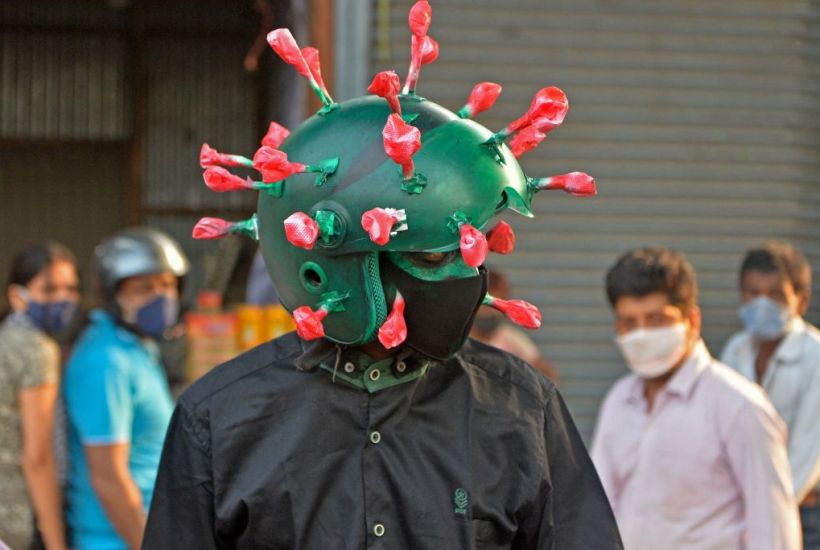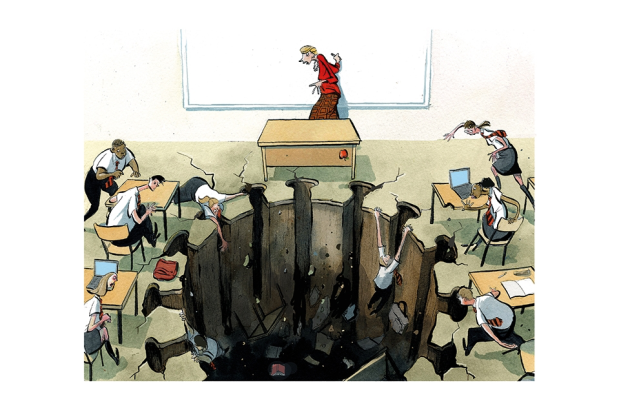In recent weeks there has been a lot of new-found optimism in Britain with regards to Covid: case numbers, hospitalisations and deaths have dramatically fallen and the vaccine roll out continues at pace. The virus has now been overtaken as the main cause of death in England and Wales for the first time since autumn. But the pandemic continues to grow, and nowhere more so is this the case than India.
Its hospitals are overrun. Crematoriums are overwhelmed and the first of nine planes from Britain set off on Sunday night to provide oxygen, ventilators and aid. Why should it be surging now? One of the theories behind this explosion is a new variant of coronavirus (B.1.617).
As an epidemiologist and medical academic, I have spent most of my career investigating epidemics and outbreaks of infectious disease. Yet no other disease before Covid has had the ability to shift me from optimism to pessimism and back again as quickly as Covid does. The reason? New variants. So how concerned should we be by B.1.617? And could it impact our roadmap out of lockdown? There is, in short, certainly a theoretical reason to be concerned. Practically, however, we have yet to see enough evidence that it really is a game-changer.
Since Covid began spreading around the globe, there have been tens of thousands of mutations to the virus. These mutations arise entirely randomly. The only factor that influences their appearance is the number of infections that are occurring in any given place. The vast majority of mutations are of little relevance.
But some mutations do cause serious problems. We saw with the Kent variant that the virus became more transmissible due to the N501Y mutation. The South African and Brazilian variants also both have this same N501Y mutation. However, they also contained another distinct change: an ‘escape mutation’, E484K. This term might sound frightening, but it is not a binary term: it simply means a mutation that makes the virus less controlled by prior immunity, whether from immunisation or a natural infection.
This E484K mutation is the reason why the current vaccines are feared to be less effective against the South African variant than against previous variants, according to some early, small studies.
Novavax, for instance, found in phase two and phase three trials that their vaccine was 96 per cent effective against the original variants of Covid, 86 per cent effective against the Kent variant and just 55 per cent effective against the South African variant. A clinical trial of the AstraZeneca vaccine in South Africa found very low effectiveness. A study of 150 patients in Israel found that vaccinated people were eight times more likely to get infected by the South African variant than the original strain of Covid-19.
However, it must be noted that the sample sizes in both these latter two studies were small and the AstraZeneca vaccine participants were all young. Their conclusions should therefore be treated with some caution.
The Indian variant is described as having a ‘double mutation’ – which sounds scarier than it is. Put simply, the variant is concerning because it has two ‘escape mutations’ (E484Q and L452R) – which mean it could, in theory, be more resistant to vaccinations or prior immunity from infection than the South African or Brazilian variants. It does not mean (and, in fact, it is unlikely) that vaccines would not provide a degree of some protection.
Another concern is that the Indian variant has another mutation (P681R) which seems to increase the rate of cleavage between the S1 and S2 subunits of the spike protein, which is essential for cell entry and so it could theoretically make the virus more transmissible as well. If it can out-compete the Kent strain, then it could become a problem here.
But there is no need to panic just yet, for it will be another few weeks before we have a really good idea about whether the Indian variant is likely or not to become dominant in the UK. Its prevalence in India still dramatically depends on the region (see the below chart).
We know from studies of other human coronaviruses, long before Covid, that coronavirus can accumulate such escape mutations over time. Each mutation is not sufficient to lead to complete escape from immune control, but as more mutations accumulate the virus becomes increasingly resistant to antibodies that would have completely neutralised the original virus. This process is known as genetic drift.
The big concern, therefore, is that with two escape mutations, it is possible that the Indian variant could be even less controlled by the current vaccines than either the South African or Brazilian variants appear to be from early trials.
There have already been some studies suggesting vaccines may be less effective against the Indian variant. Scientists from Banaras Hindu University in India used a docking analysis (which uses computer modelling to work out the structures of proteins and how tightly antibodies may bind to them) to try and predict the likely impact of new variants of Covid-19 on vaccine effectiveness.
They calculated that antibodies developed against the original (pre-Kent) variant would reveal the lowest binding affinity for the double escape mutation of the Indian variant compared to all other variants. They concluded that the current generation of vaccines may be less effective against the Indian variant than against the South African or Brazilian strains.
‘This double mutant strain seems to be a major burden for the available vaccine that could reduce the vaccine efficacy drastically and so may increase the chances of re-infection,’ the report authors write. But they warn, ‘More research is still needed to explicate the exact consequences of the double-mutant strain of Sars-CoV-2.’.
This study must also be taken with a pinch of caution, for such modelling comes with the usual caveats. We will not have certainty until laboratory studies are conducted. The best evidence will be from studies of infections in people after immunisation. But that may be some way off.
It is also possible that the ‘booster’ vaccine aimed at the South African and Brazilian variants would not work against the Indian variant because it’s a different mutation, leading to a different amino acid in the coronavirus spike protein. This spike protein is unlikely to be close enough to allow complete protection even with antibodies that are effective against the two other troublesome variants.
However, there is hope that a new generation of vaccines could be designed that would still be highly effective against future variants.
So does the Indian variant pose a real threat to the control of the epidemic? It has become the dominant variant at least in Maharashtra where most sequence results are available. Around 60 per cent of cases sequenced from Maharashtra over the first three months of this year have been this new B.1.617 variant. This suggests that the Indian variant poses an increased threat. But it is not proof in itself that the Indian variant is driving this surge. One of the issues is that India only sequences a very small proportion of its positive results – so it is difficult to be certain what may be going on throughout the country.
How bad the Indian variant will turn out to be for the UK will largely depend on how much less effective current vaccines prove to be – and how much more or less infectious it is compared to the Kent variant. And we won’t know for a while if this is the case.
There is, as yet, no evidence that the Indian variant is more infectious than the Kent variant. All things being equal, it is doubtful that the Indian variant would outcompete the Kent variant. But things are not equal.
About half of the UK population have had at least one dose of a vaccine and this will be suppressing transmission of the Kent variant, which could, in theory, potentially allow the Indian variant to become dominant.
For now, however, the government has designated it a ‘variant under investigation’, rather than a ‘variant of concern’ and that is right given the information we currently have. Any variant that is considered to have epidemiological, immunological or pathogenic properties that are concerning is designated a Variant Under Investigation (VUI) and then formally investigated. Variants are only classified as a Variant of Concern (VOC) once sufficient data has been collected and after a risk assessment by the relevant expert committee. If reports, however, of the Indian variant continue to grow at the rate they have been over the coming weeks, then it should not be long before it is classified as a variant of concern.
As case numbers continue to increase globally, there is a real chance that further variants arise in the coming weeks and months. The fear, of course, is that new variants arise that have even more escape mutations: this could really undermine our existing vaccination programme.
Make no mistake, if new variants emerge that do doge the vaccine, perhaps with three or more escape mutations, then this could have a profound impact on case numbers here later in the year. The only thing that is clear, for now, is that this pandemic will be with us for some time yet.
<//>
Got something to add? Join the discussion and comment below.
Get 10 issues for just $10
Subscribe to The Spectator Australia today for the next 10 magazine issues, plus full online access, for just $10.



















Comments
Don't miss out
Join the conversation with other Spectator Australia readers. Subscribe to leave a comment.
SUBSCRIBEAlready a subscriber? Log in